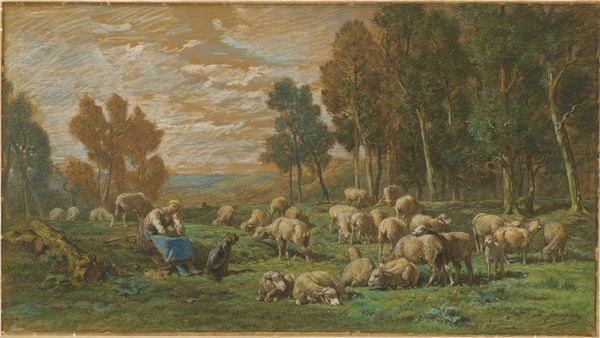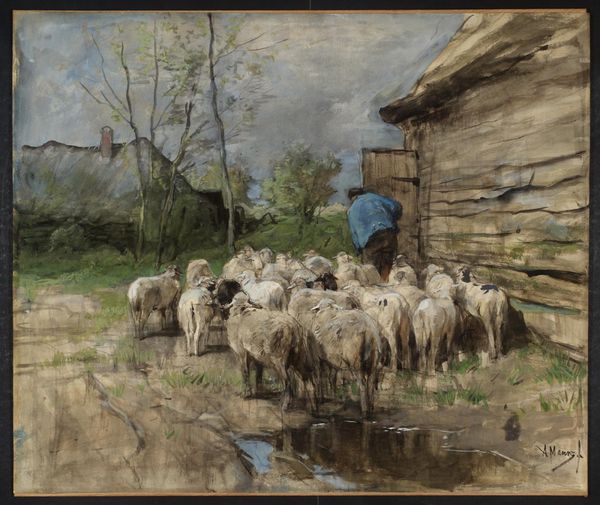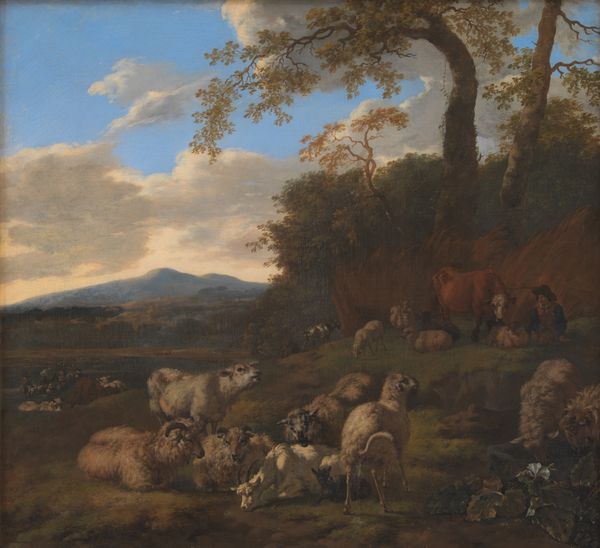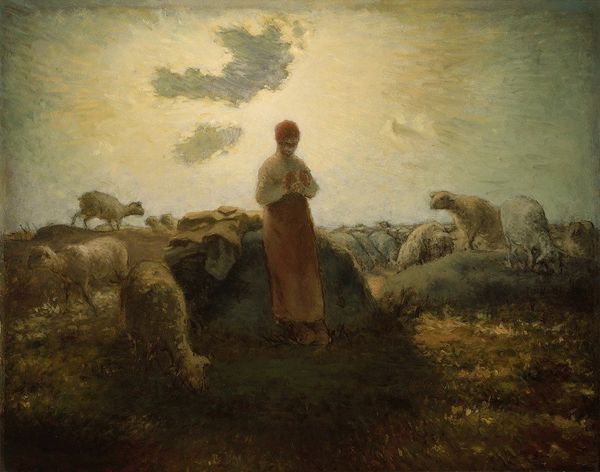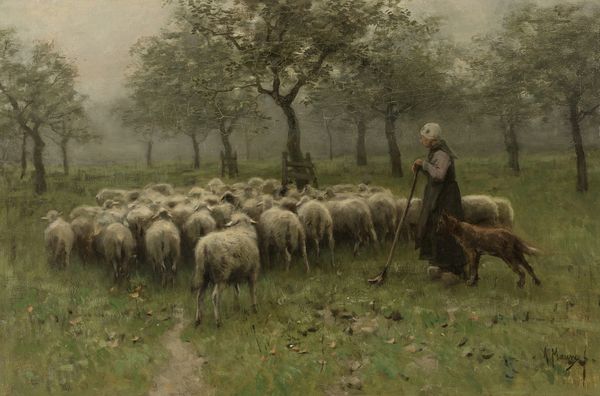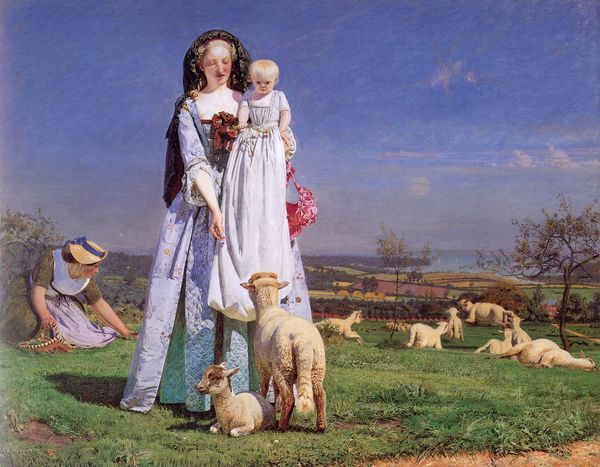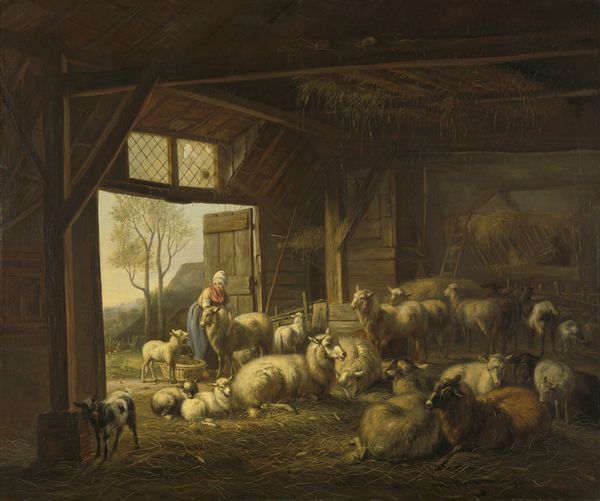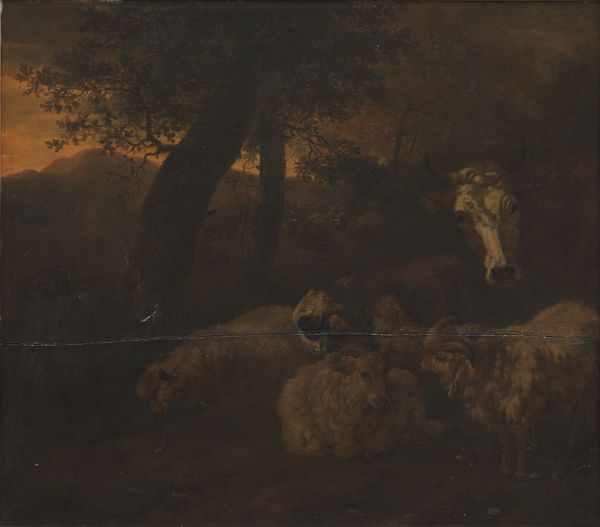
painting, oil-paint, oil-on-canvas
#
portrait
#
painting
#
oil-paint
#
landscape
#
romanticism
#
animal portrait
#
france
#
genre-painting
#
academic-art
#
surrealist
#
oil-on-canvas
#
realism
Dimensions: 18 5/8 x 26 5/8 in. (47.31 x 67.63 cm) (canvas)
Copyright: Public Domain
Editor: So, we're looking at "Shepherdess and Sheep," an oil on canvas painting by Charles-Émile Jacque from the 19th century. The earthy tones create a peaceful feeling, almost pastoral. What stands out to you? Curator: It's interesting to consider this image through the lens of labor and production. How does Jacque's artistic process – the application of oil paint, the layering, the conscious selection of this very scene – elevate a common scene into something 'artful'? The materials themselves, oil and canvas, and how readily available were they? How did their cost affect who got to participate in artmaking, as the artist here, and as a patron? Editor: That's a completely different perspective than I expected! I hadn't considered the economic factors at all. How does the subject matter, a shepherdess, tie into this? Curator: A shepherdess and her sheep: this depicts rural labour, carefully framed for an urban audience. What was the social context in France? Consider how the Industrial Revolution pulled people from the land, but created an interest in romanticising rural life in art. This becomes another commodity. We buy and consume representations of labor rather than participating in it. Look at the brushstrokes, they feel swift, and deliberate. What can that swiftness and looseness tells us about the artist's labour? Is this is a study for something bigger, or an affordable artwork intended for a specific buyer? Editor: So, you're saying the painting itself is both a product of and a commentary on labor? Curator: Precisely. Jacque isn't just depicting a scene, but engaging in a dialogue about the changing landscape of work and leisure, materiality and art. Even down to the canvas – what material is it made of? And was it sourced locally, regionally or even globally? The impact of materiality extends far beyond the artwork itself. Editor: That really gives me a lot to think about! I never considered a landscape painting through a materialist lens before. Thanks for the new perspective! Curator: It's just one way to consider it. Thanks for offering the opportunity!
Comments
No comments
Be the first to comment and join the conversation on the ultimate creative platform.
